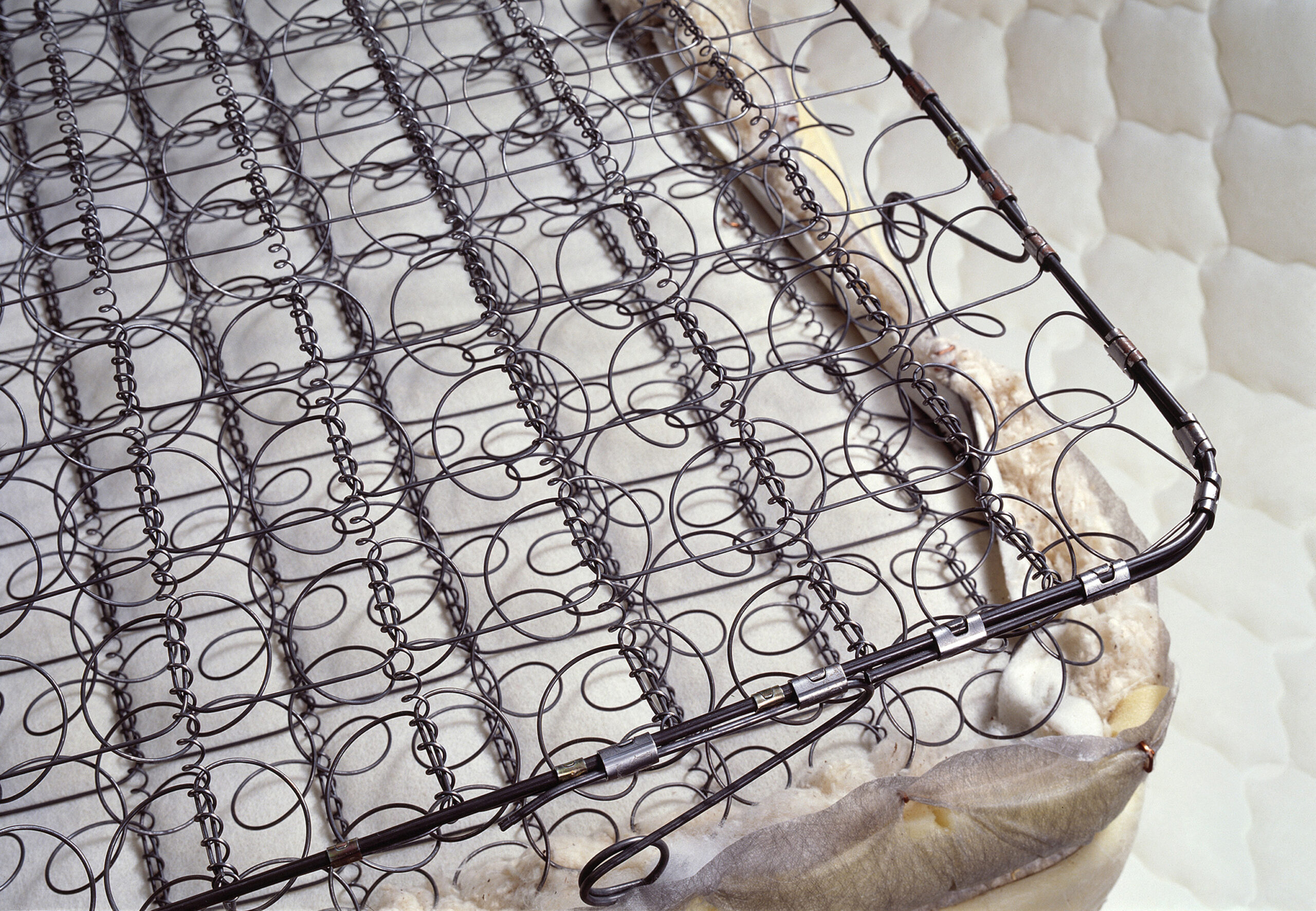Steel springs give mattresses their bounce, but they also make disposal tricky. Cutting coils without proper care can cause injuries because springs are under tension. Use this guide to learn how to handle mattress springs safely and what to do with them afterward.
Know your springs and why safety matters
- High‑tension metal. Most mattress springs are made of steel and are tightly coiledpuffy.com. When cut, they can snap back unexpectedlypuffy.com.
- Spring types. Bonnell coils are interconnected and may uncoil when cutpuffy.com. Pocketed coils are wrapped individually and can be separated by cutting the fabric pocketspuffy.com.
- Protect yourself. Gloves, safety goggles and a mask shield you from sharp edges and flying bitspuffy.com. Work outside or in a well‑ventilated space to avoid dustezjunkhauling.com.
Set up your work area
- Carry the mattress outside or to a clear area and lay it flatezjunkhauling.com. A tarp helps catch debrispuffy.com.
- Keep children and pets away while you workpuffy.com.
- Gather tools: a seam ripper or utility knife, heavy‑duty pliers, bolt cutters or an angle grinder, and boxes for sorted materialsezjunkhauling.compuffy.com.
- Wear long sleeves and closed‑toe shoes to protect your skin.
Step‑by‑step: cutting coils safely
- Remove fabric and padding. Cut the piping and outer fabric to expose the springspuffy.com. Pull out staples and padding with pliersezjunkhauling.com.
- Separate the coils. For pocket springs, cut the fabric pockets between each coil. For interconnected coils, snip the wire at the twist pointspuffy.com.
- Cut the springs. Use heavy‑duty bolt cutters or an angle grinder to cut each spring near the basepuffy.com. Stand to the side so tensioned coils don’t snap back toward you. A reciprocating saw with a metal blade can also workpuffy.com.
- Collect and contain. Drop each cut coil into a cardboard box; avoid plastic bags because sharp metal can puncture themezjunkhauling.com.
- Clean up debris. Sweep up metal fragments and fabric scraps. Double‑check for stray pieces that could cause injury later.
Proper disposal or repurposing
- Recycle metal. Steel springs can be taken to a scrap metal dealer or recycling centrepuffy.com.
- Do not put coils in plastic bags. Use sturdy boxes so springs don’t tear throughezjunkhauling.com.
- Consider upcycling. Springs make unique garden trellises or art projectspuffy.com.
When to call a professional
- If the springs are thick or fused to a frame, hire a professional mattress removal servicepuffy.com. Cutting at home may be too risky.
- Donate or recycle the whole mattress if it’s still in usable conditionpuffy.com.
Tools & safety box
- Protective gear: Wear heavy‑duty gloves, goggles and a dust maskpuffy.com.
- Check tools: Ensure bolt cutters and saws are in good conditionpuffy.com.
- Stable work surface: Work on a flat surface with plenty of spaceezjunkhauling.com.
- Keep first‑aid nearby: A first‑aid kit is handy for minor scrapespuffy.com.
- Sort materials: Separate metal, fabric and foam into boxes for recyclingezjunkhauling.com.
FAQs
Can spring tension cause injury? Yes. Steel coils are under tension and can snap back when cutpuffy.com. Always cut slowly and stand to the side.
Do I need special training to cut coils? No formal training, but you should have basic tool skills and follow safety stepspuffy.com. If you feel unsure, hire a professionalpuffy.com.
What’s the safest way to dispose of springs? Place cut coils in a sturdy cardboard boxezjunkhauling.com and take them to a metal recycling facilitypuffy.com.
Gentle reminder
If cutting coils feels overwhelming, Ex‑Mattress can help. See our best tool for cutting springs article to choose the right tool, or learn general cutting methods in our ultimate foam mattress cutting guide. When you’re ready, book a pickup and we’ll make disposal easy.

